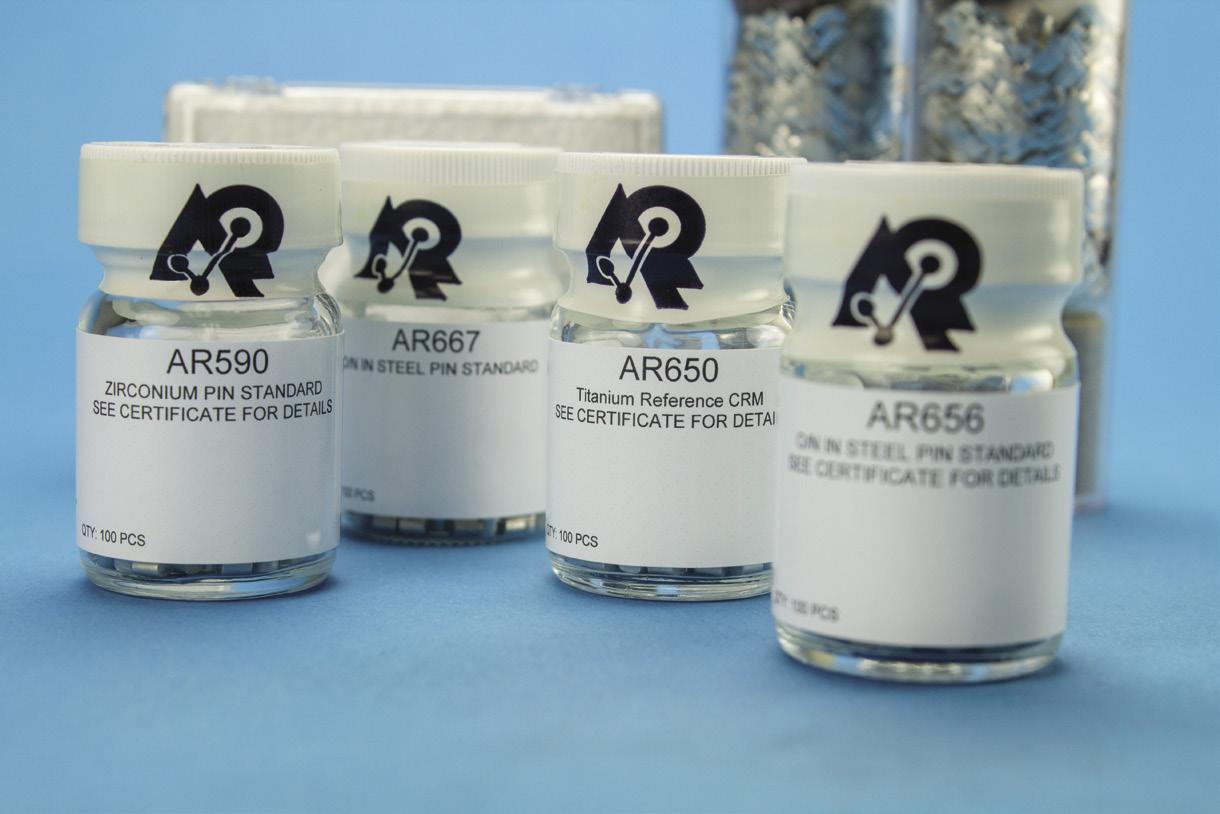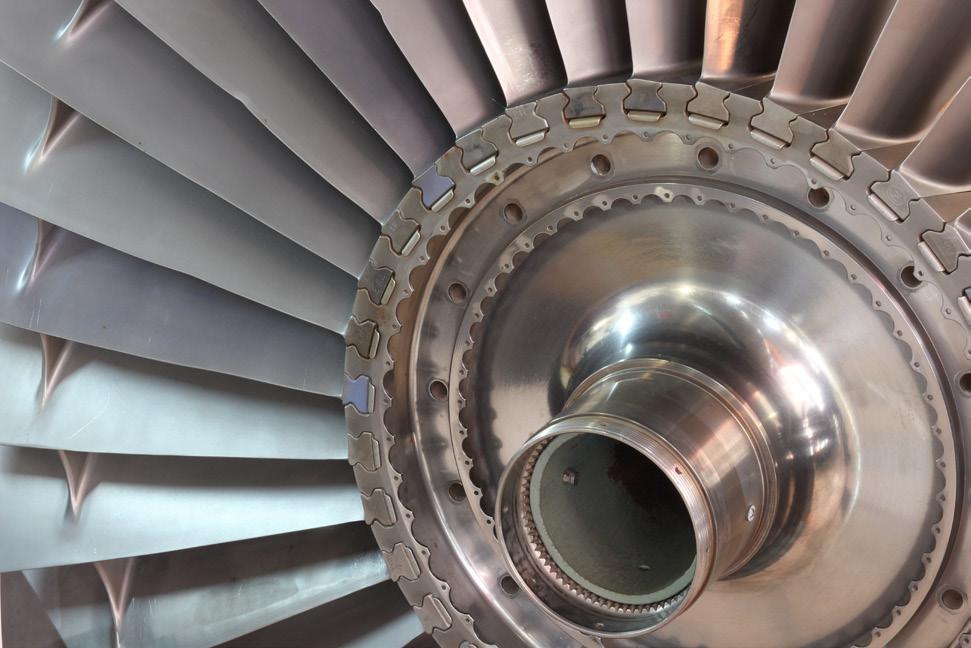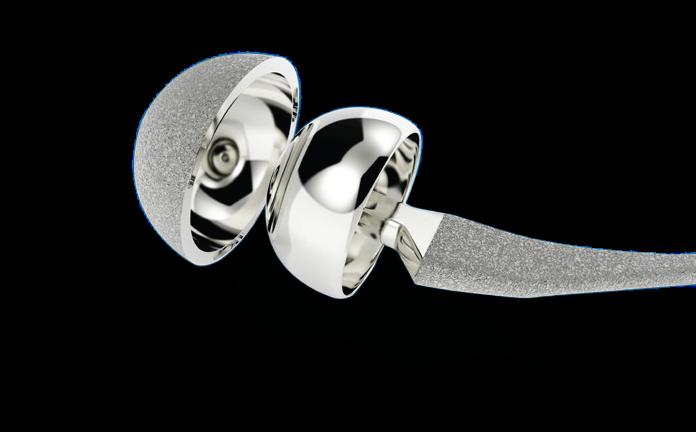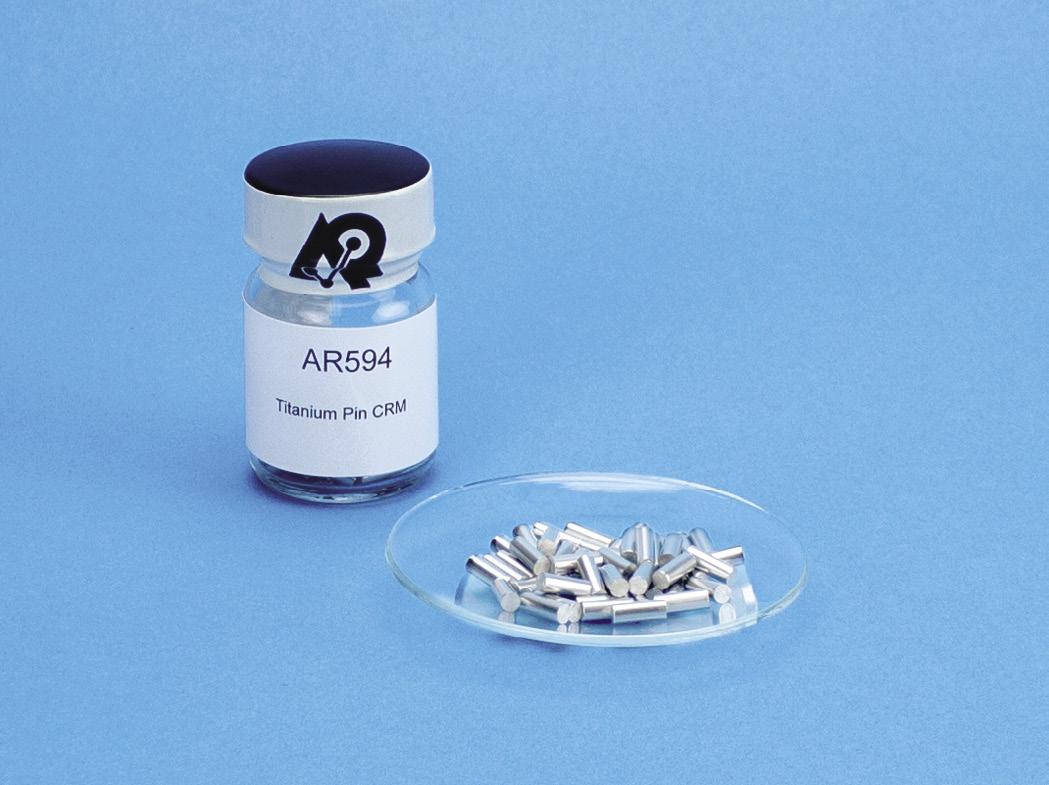
12 minute read
Progress at Norsk and Other Organizations Combine to Achieve AM ‘Inflection Point’
By Michael C. Gabriele
The long-awaited inflection point for full-fledged commercial additive manufacturing (AM) in the titanium industry finally has arrived. This declaration comes as a result of cumulative advances in AM in recent months, as profiled in the pages of TITANIUM TODAY, with the final piece of the inflection-point puzzle arriving via recent developments at Norsk Titanium’s operations in Plattsburgh, NY.
AM has been a hot-button issue for the titanium industry for more than seven years. Even though the pieces of the puzzle are rapidly falling in place, two questions remain: how fast will production ramp up to achieve commercial volumes?; and will AM fulfill its highly touted promise as a manufacturing technology to compete with traditional machining, casting and forging, especially in the aerospace industry and beyond?
Norsk Titanium received the International Titanium Association’s (ITA) 2018 Titanium Application Development Award for its AM work. Nicholas Mayer, vice president, commercial, said Norsk has verified that the AM technology will accelerate as an industry process for commercial aerospace in the first quarter of 2023 and will continue to advance throughout next year, as the company now has specifications in place as well as a full stable of wire-fed AM machines. According to Mayer, Norsk has widely accepted Society of Automotive Engineers (SAE) production specifications that are applicable across multiple industries as well as manufacturer specific specifications from Boeing and Airbus to design and build parts that “specify” AM titanium.
Specifications have also been developed by U.S. defense contractors for manned and unmanned military applications. The company also recently announced an expansion to the rapidly growing semiconductor manufacturing equipment market with their partner, Hittech Group BV (website: https://hittech.com/). “This 150-pound titanium print allows Hittech to increase their capacity to meet end customer needs without costly capital investment and will be in full scale production late this year.”
In addition, the company has qualified a supply chain for the specs, and there is a confluence of technologies that will provide complete material and part inspections needed for aerospace and defense applications. Mayer said Norsk works with tier-one suppliers such as Spirit Aerosystems, Wichita, KA (website: https://www.spiritaero. com) and Premium AEROTEC GmbH (website: https://www. premium-aerotec.com/) to integrate into the existing OEM supply chain.
The Plattsburgh facility has a fleet of 31 Merke IV® AM, CNC controlled machines, and is expecting one more unit in the near future. Thanks to a $125-million partnership with the State of New York, Norsk is “building out production capacity to meet customer needs in the aerospace industry.” Along with its AM machines in Plattsburgh, Norsk has three Merke IV® units in Hønefoss, Norway.
Mayer said Plattsburgh’s Merke IV® fleet includes G4B model machines, with a 900 millimeters (3 feet) by 600 millimeters (2 feet) by 300 millimeters (1 foot) workspace, along

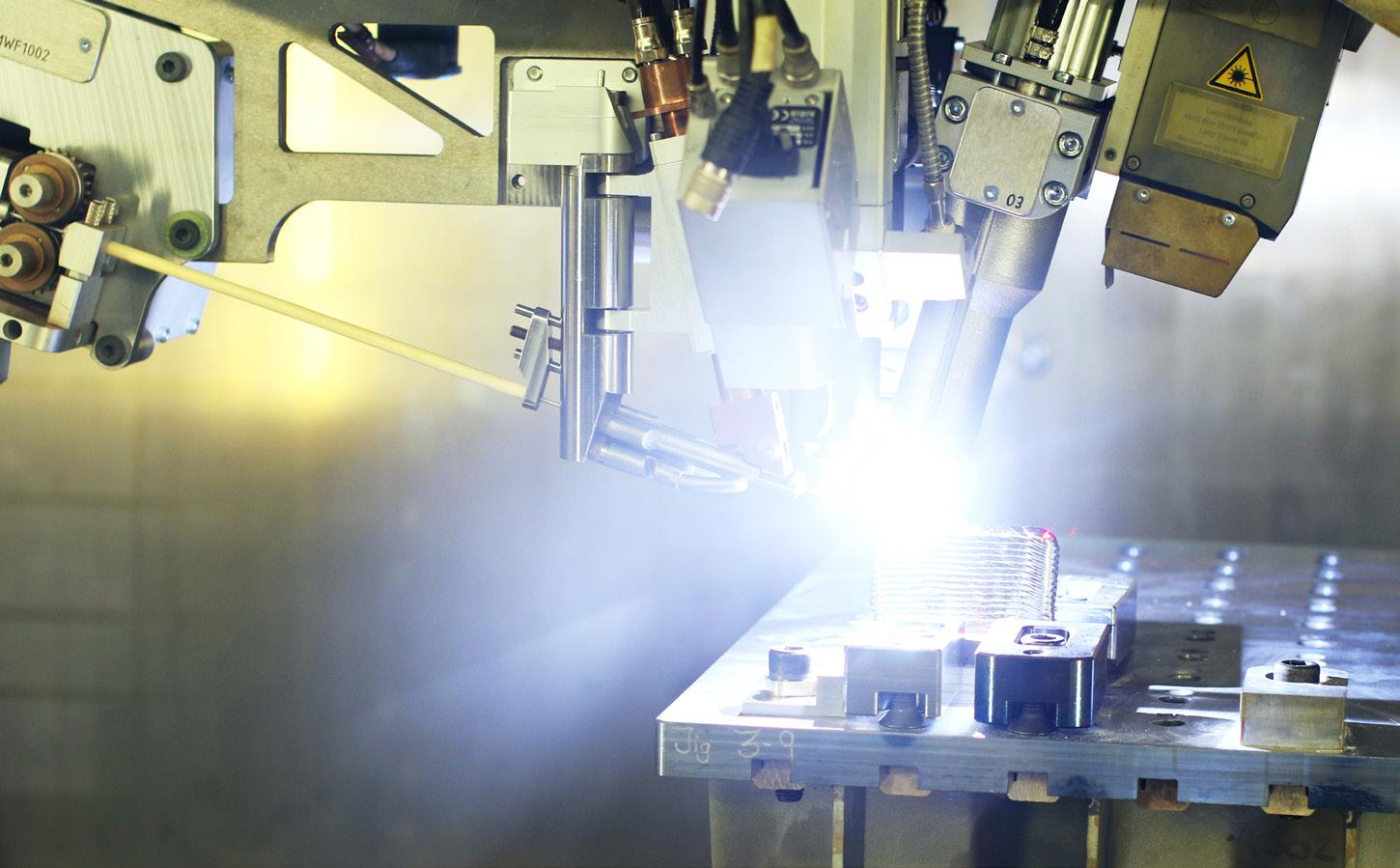
Close-up shot of Norsk’s Merke G4 AM machine producing parts at the company’s Plattsburgh, NY, facility.
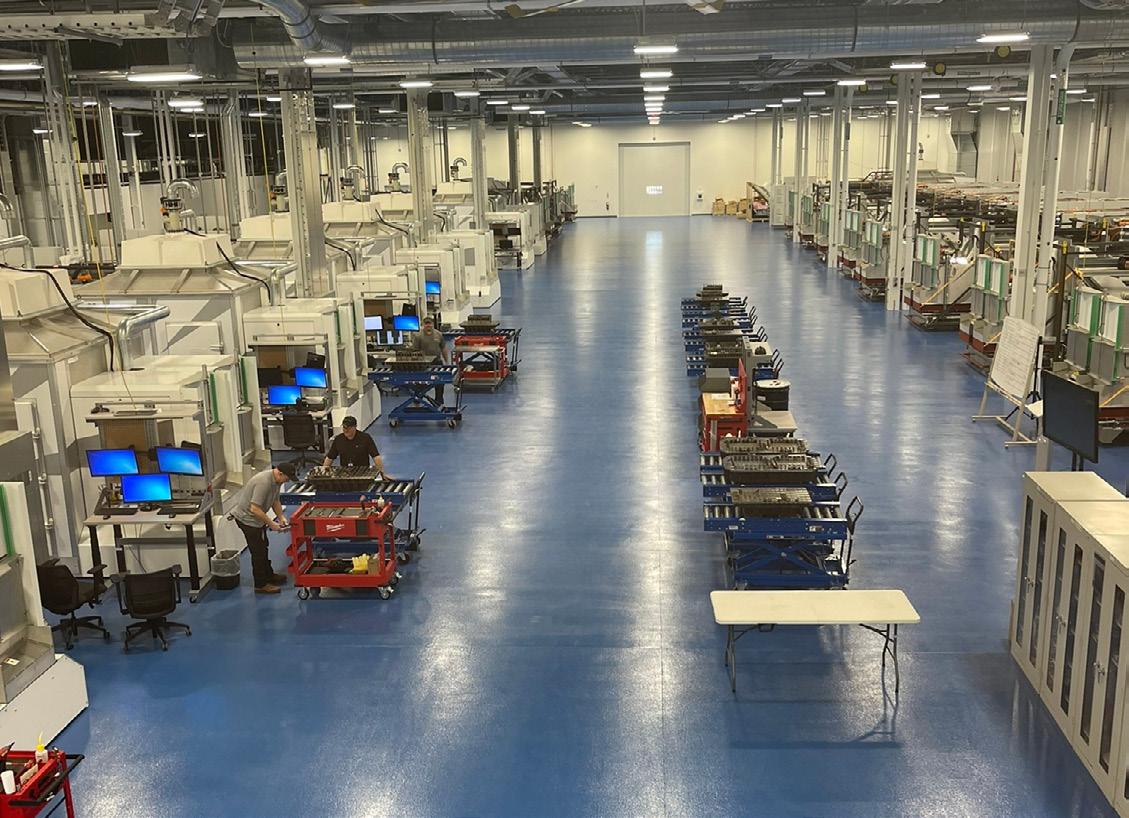
with G4L machines, which provide a work envelope of up to 1.9 meters (6.5 feet) in length. All of the equipment is “sized to meet aerospace demand for structural parts.” He declined to identify specific parts currently in the production pipeline.
Norsk’s AM will focus on the longstanding, workhorse alloy Ti-6Al-4V wire, but new, advanced titanium and other metal alloys also are under consideration. Mayer said their titanium wire additive process is used for large, primary structure parts that require high material deposition rates, with powder metal AM being best suited for smaller, more detailed components. “Our market
for aerospace parts doesn’t intersect with the laser powder market,” Mayer pointed out.
As stated in its most recent annual company report, Norsk, with its proprietary Rapid Plasma Deposition® (RPD®) technology, “is enabling a paradigm shift to a clean and sustainable manufacturing process. Thanks, in part, to our partnership with the State of New York, Norsk Titanium has 700 metric tons of annual production capacity between its facilities in Norway and the United States, which supports our business plan through 2026 and beyond. With no need for further investments in machinery, we have directed our resources towards qualifications and testing to ensure our customers can utilize our 3D printed material commercially as a direct replacement for parts currently manufactured using traditional technologies. Through highly optimized and repeatable digital programming, RPD® technology melts titanium wire into near-net-shape parts while maintaining material integrity equivalent to the highest specifications, like aerospace-grade forgings.”
The company’s annual report indicated that Norsk’s “successful execution of Boeing’s Material Allowables Program in 2017 enabled the first additively manufactured titanium component qualified for structural application on a commercial airliner. Norsk Titanium currently provides seven AM parts on every Boeing 787 aircraft put into operation.” Last year Norsk began expanding its commercial aerospace applications through Airbus’ machine qualification and part development efforts and anticipates introduction of serial production parts in 2023 on the A350.
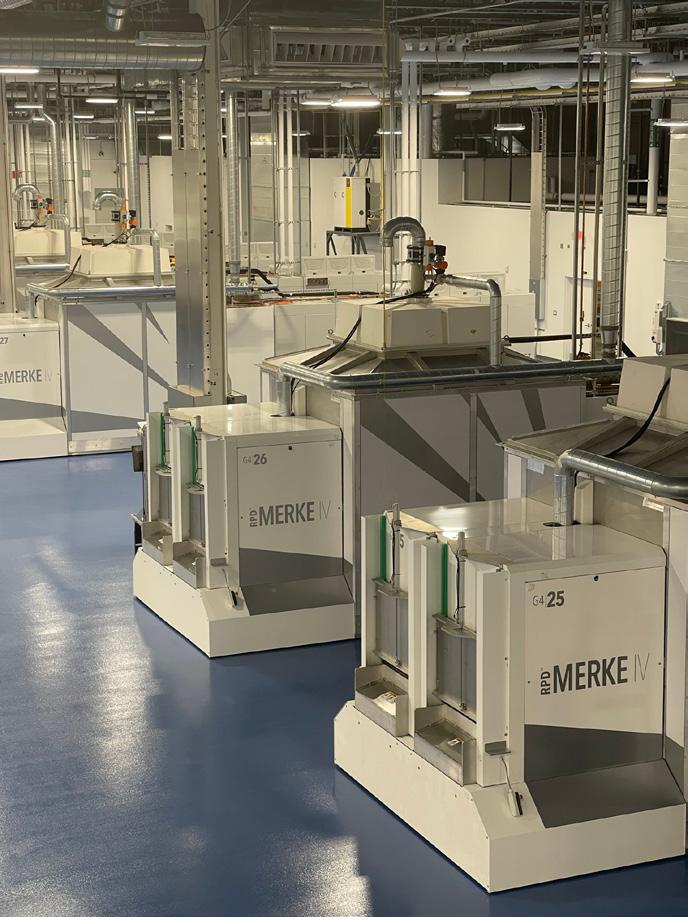
Norsk’s fleet of Merke AM equipment Norsk’s Plattsburgh, NY, factory floor

Nicholas Mayer, Norsk Titanium’s vice president, commercial, said the company has verified that the AM technology will accelerate as an industry process for commercial aerospace in the first quarter of 2023 and will continue to advance throughout next year, as the company now has specifications in place as well as a full stable of wirefed AM machines. Norsk’s Plattsburgh, NY, facility has a fleet of 31 Merke IV® AM, CNC controlled machines. Norsk currently provides seven AM parts on every Boeing 787 aircraft put into operation.
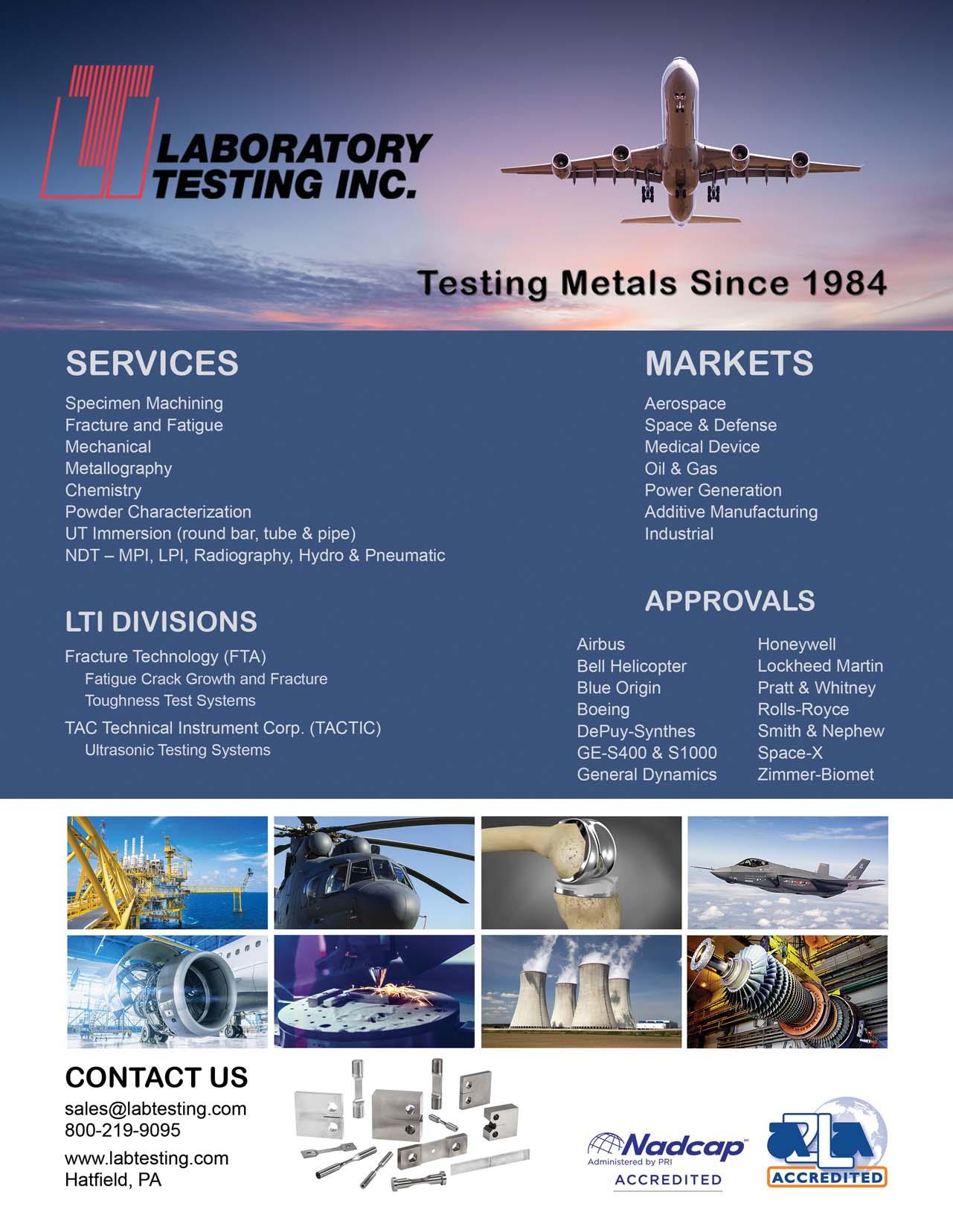
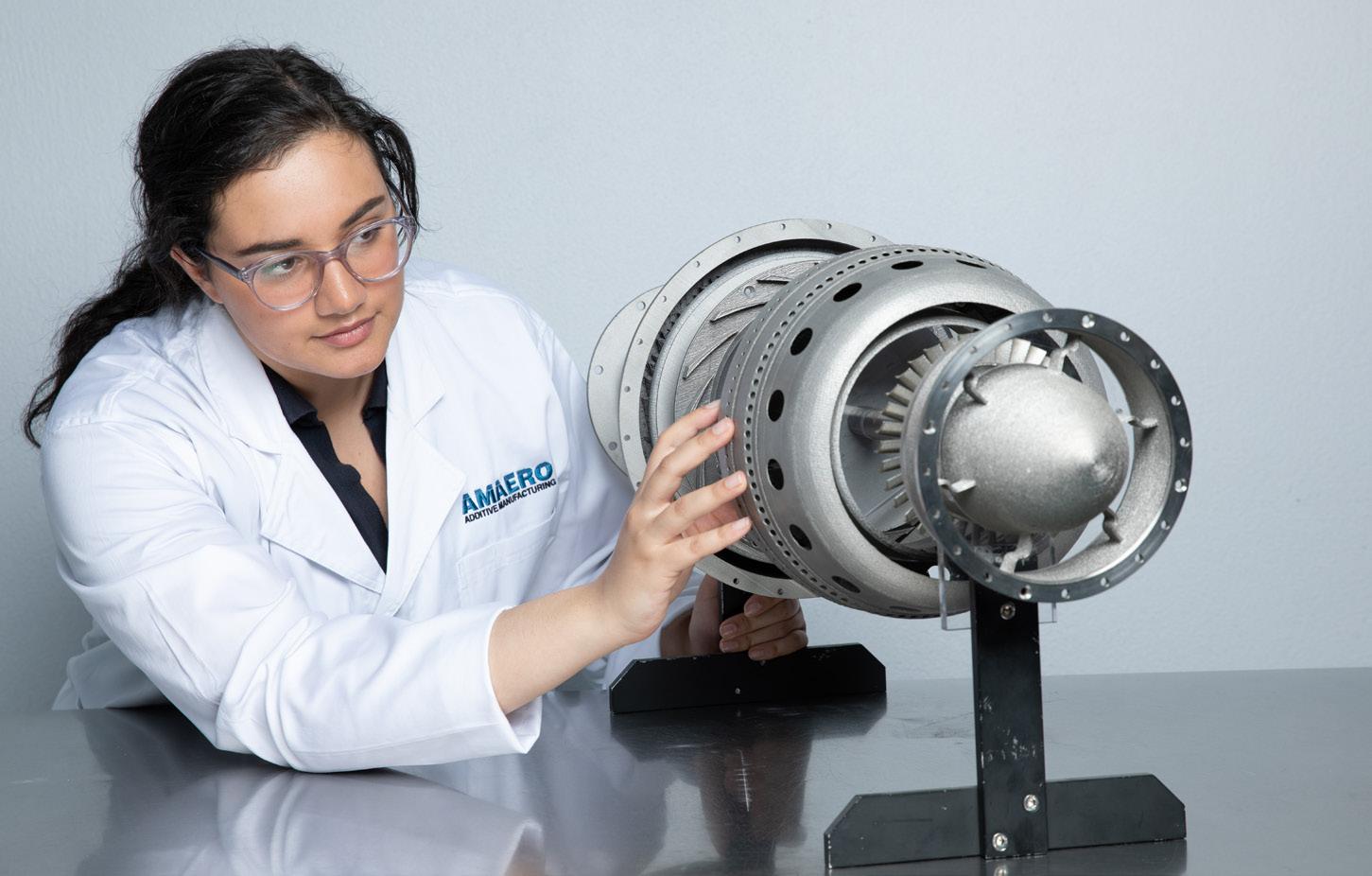
Each Merke IV® fourth-generation production machine can produce up to 20 metric tons annually of AM parts, depending on part size and geometry. “Each machine follows a routine calibration sequence which maintains machine-tomachine equivalency and maintains performance over time.” The annual report stated that Norsk’s Plattsburgh Production Center (PPC) covers an area of 80,000 square feet. “Our machines at PPC were approved for Boeing production in 2021 and we expect additional customer qualifications to be complete by mid-2022, with mass production for contracted parts to begin during the fourth quarter of 2022.”

The Journey to an Inflection Point
During the last four-plus years TITANIUM TODAY has dedicated significant coverage to the milestones for an AM “inflection point,” a termed used by Art Kracke, the president of AAK Consulting L.L.C., who’s been associated with the global titanium industry for four decades. During his presentation at the TITANIUM USA 2018 conference and exhibition, he compared the commercial and technical progress of titanium AM with the inflection point of aluminum in the early 1950s—the period when aluminum evolved from a high-cost metal to an industrial commodity. Kracke focused his remarks on powder metal AM, but he did recognize Norsk’s success on producing AM parts for Boeing’s 787 with its wire-fed RPD® technology to produce near-net-shape titanium parts.
Earlier this year, TITANIUM TODAY reported on Amaero International Limited (website: https://www.amaero.com.au), an Australian-based public company specializing in the provision of end-to-end metal additive manufacturing solutions in terms of materials, services, equipment and technology to its key clients in the aviation, defense, space, and medical sectors, as well as in the specialized tool and die industry. Amaero International evolved out of one of the Technology Research Platforms of Monash University, Australia’s largest university (website: https:// www.monash.edu). Amaero works with many of the world’s leading manufacturers of aerospace and defense products in research and development as well as in scaling up additive manufacturing capability. Amaero established its facility in the greater Los Angeles area of El Segundo in 2020 to service and be strategically located nearby the leading global defense contractors. Having set up its manufacturing bases in Australia and the United States, Amaero is tackling the issue of strategic supply of titanium alloy powders, on which its business relies. With the bulk of the global supply of titanium metal feedstock coming from Russia, China and Kazakhstan, it’s challenging to source titanium powder that has been manufactured from feedstock produced only in allied nations.
The National Center for Additive Manufacturing Excellence (NCAME) (website: https://www.eng.auburn. edu/research/centers/additive/index. html) at the Samuel Ginn College of Engineering at Auburn University, Auburn, AL, is contributing to the trek towards arriving at a much-anticipated inflection point. The center operates as additive manufacturing center of excellence, a collaborative effort among Auburn University, NASA, National Institute of Standards and Technology (NIST), and ASTM International. NCAME’s mission is to facilitate effective collaborations among industry, government, academia, non-profit organizations, and ASTM committees, ensuring a coordinated, global effort toward rapidly closing standards and workforce development gaps in additive manufacturing. NCAME has benefitted from strategic capital investments in recent years, which, collectively, have helped to transform the group into a hub for leading-edge technology. The list of investments and grants include a $18-million renovation of Auburn’s Gavin Engineering Research Laboratory; support from Auburn’s Presidential Awards for Interdisciplinary Research grant to explore additive manufacturing for medical implants; $7-million in grants from the NIST; a $4.5-million
An Amaero AM materials engineer examines jet engine produced via the AM process
ALD Vacuum Technologies High Tech is our Business ALD Vacuum Technologies High Tech is our Business
SYSTEMS FOR AVIATION INDUSTRIES VACUUM SYSTEMS AND TECHNOLOGIES FOR METALLURGY AND HEAT TREATMENT SYSTEMS FOR AVIATION INDUSTRIES
MELTING SYSTEMS MELTING � VIM Master MeltingSYSTEMS � � VAR VIM Master Melting � � ESR VAR � � EB Melting ESR � � PA Melting EB Melting PAM Melting � PA Melting NEAR NET SHAPE TECHNOLOGY COATING SYSTEMS


CASTING SYSTEMS
� VIM-IC � Leicomelt with Cold Crucible � VAR Skull Melting
HOT ISOTHERMAL FORGING (HIF) METAL ADDITIVE MANUFACTURING
� EIGA: Ceramic free Metal Powder Production � VIGA: Inert Gas Atomization Equipment
� EB-PVD SYSTEMS CASTING SYSTEMS Electron Beam Physical Vapour � � VIM-IC Leicomelt Deposition (EB-PVD) of Thermal Barrier Coatings (TBC) with Cold Crucible � VAR Skull Melting
HOT ISOTHERMAL FORGING (HIF)
NEAR NET SHAPE TECHNOLOGY COATING SYSTEMS
METAL POWDER
METAL ADDITIVE PRODUCTION � EB-PVD SYSTEMS MANUFACTURING Electron Beam Physical Vapour � EIGA: Ceramic- Deposition (EB-PVD) of Thermal free Metal Powder Production Barrier Coatings (TBC) CVD SYSTEMS � VIGA: Inert Gas Chemical Vapor Deposition Atomization for non metallurgy applications Equipment
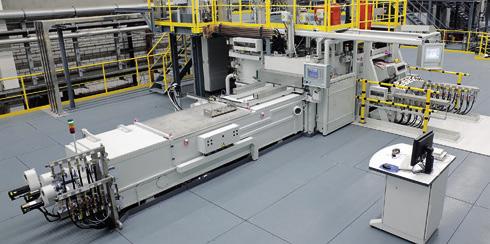
Courtesy of SLM Solutions
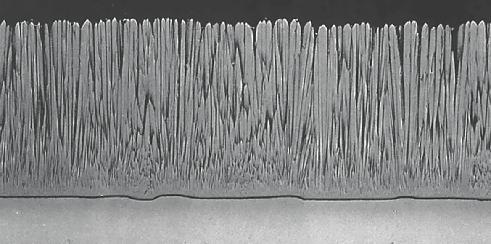
Courtesy of SLM Solutions
ALD Vacuum Technologies GmbH
Otto-von-Guericke-Platz 1 | 63457 Hanau, Germany T: +49 6181 307-0 | info@ald-vt.de ALD Vacuum Technologies GmbH Otto-von-Guericke-Platz 1 | 63457 Hanau, Germany T: +49 6181 307-0 | info@ald-vt.de
ALD Vacuum Technologies North America, Inc.
18 Thompson Road | East Windsor, CT 06088, USA T: +1 860 386 7227 | info@ald-usa.com ALD Vacuum Technologies North America, Inc. 18 Thompson Road | East Windsor, CT 06088, USA T: +1 860 386 7227 | info@ald-usa.com HEAT TREATMENT SYSTEMS HEAT TREAT� SYNCROTHERM® MENT SYSTEMS Total Integration � SYNCROTHERM® of Heat Treatment Total Integration into Component of Heat Treatment Manufacturing into Component Manufacturing
www.ald-vt.com www.ald-usa.com www.ald-vt.com www.ald-usa.com
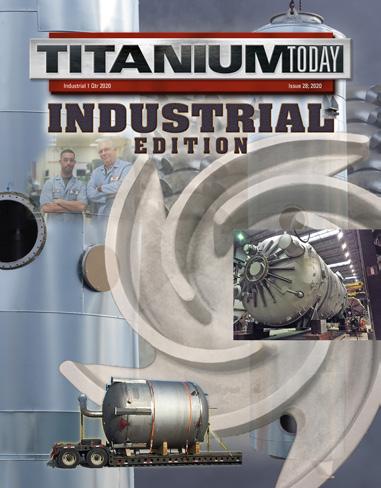
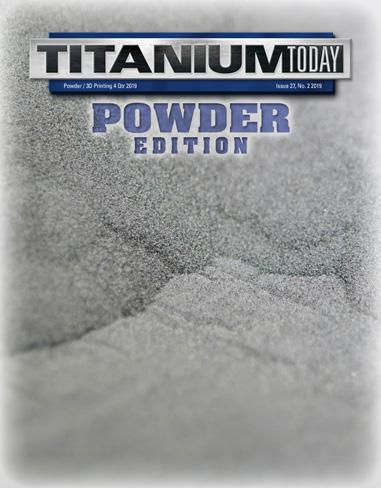
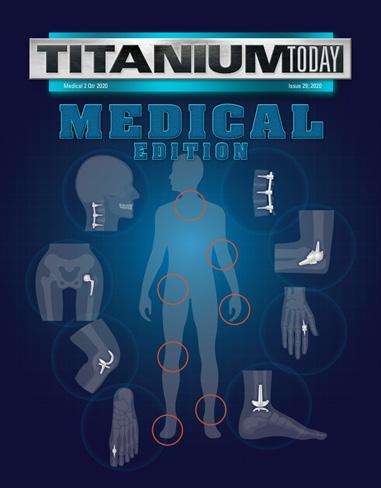

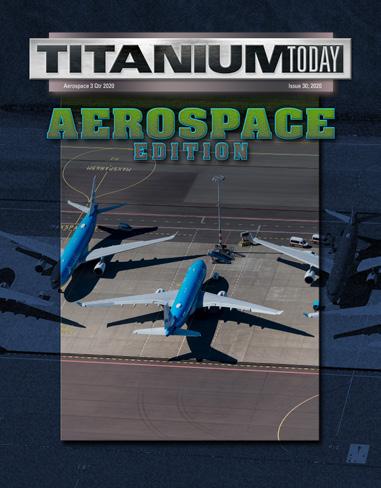

BY ADVERTISING IN TITANIUM TODAY
you connect with a specific target market unlike any other.
Each edition includes: Member Profiles, Timely Editorial, Advertising opportunities, Press Releases, Classified Ads, Calendar Events, Executive Summaries from Titanium Conferences .
As an ITA member, you have the opportunity to submit press releases, classified ads, and host your updated company profile in the trade publication all INCLUDED in your annual membership .
International Titanium Association www.titanium.org 1-303-404-2221 Telephone 1-303-404-9111 Facsimile ita@titanium.org Email
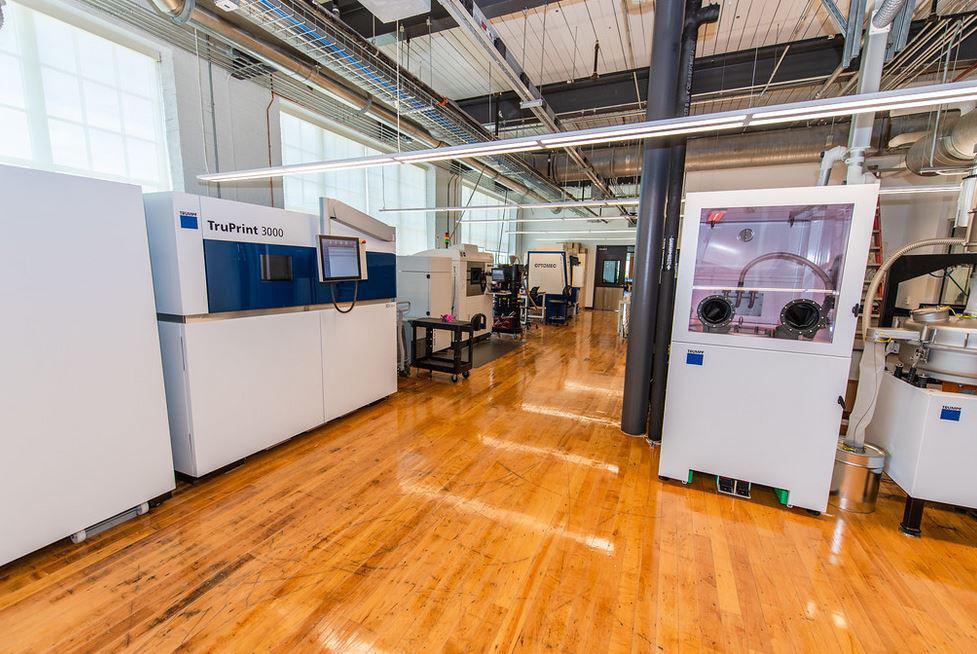
Auburn University’s Gavin Engineering Research Laboratory
grant for the FAA; a $10-million award from NASA; and a $250,000 Concept Laser MLAB 100R metal printer from GE Aviation.
The ASTM Global Additive Manufacturing Program (website: https://amcoe.org) has created a “Center of Excellence” to accelerate the standardization and industrialization of AM technology. The program is focused on identifying gaps in the AM standards. Established in 2018, the center is an alliance between ASTM and its founding partners (NASA, Auburn University, the Manufacturing Technology Center of England, and Edison Welding Institute [EWI]). The program’s mission is to provide education and workforce development offerings to support the adoption of AM technology. The partnership roster also included the National Institute for Aviation Research at Wichita State University, Kansas, and the National Additive Manufacturing Innovation Cluster in Singapore.
In August 2021, General Electric Aviation (website: https://www. geaviation.com) issued a press release trumpeting that its facility in Auburn, AL, shipped its 100,000th fuel nozzle tip produced via AM. According to GE, the AM nozzles are used on CFM International LEAP engines for various commercial aerospace platforms. Each engine has 18 or 19 fuel nozzles, depending on the specific model. CFM International is a joint venture between GE Aviation and Safran Aircraft Engines of France.
Bill Bihlman, founder of Aerolytics (website: www.aerolyticsllc. com), a strategic consultancy dedicated to aerospace materials, manufacturing, and the supply chain, penned a guest article earlier this year on incremental milestones for AM technology. “Clearly, the industry needs to walk before it runs, particularly for aerospace” regarding advances in AM, Bihlman wrote. “AM shows promise for aerospace. A large proportion of additive manufactured parts involve titanium. For AM to be cost effective for newer designs, the entire artifact needs to be considered. Targeting single parts is rarely prudent for serialized production. Parts usually need to be designed with additive in mind, from the beginning. This mentality will take time. Meanwhile, the titanium industry can expect to see novel use cases for both aerostructure and turbine applications. There will be no step change. The industry will indeed continue to incrementally evolve, for the benefit and safety of the flying public. But someday, AM will be just another tool in the toolbox.” n

ALPHA RESOURCES™
